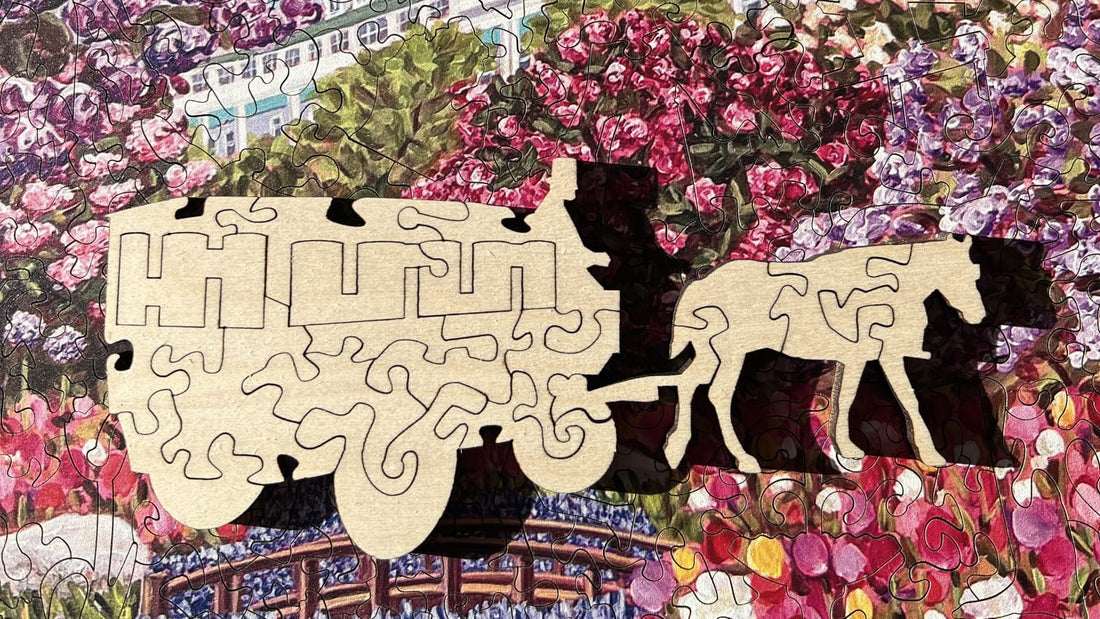Solving a wooden jigsaw puzzle can be a rewarding and enjoyable experience, but when faced with a particularly complex one, it can also become challenging. With intricate designs, unique piece shapes, and sometimes hundreds of pieces, difficult wooden puzzles require patience and strategy. Here are some expert tips to help you solve challenging wooden jigsaw puzzles faster and more efficiently.
1. Choose a Suitable Workspace
Before starting a difficult puzzle, make sure you have a dedicated space where you can work on it comfortably. A flat, well-lit surface with enough room to spread out all the pieces is ideal. A puzzle board or mat can help you move your puzzle if needed.
2. Sort and Organize Pieces
Sorting puzzle pieces is a crucial step that can save you a lot of time later. Follow these steps to organize them effectively:
- Edge Pieces First: Separate all edge pieces and assemble the border of the puzzle.
- Color and Pattern Sorting: Group pieces by similar colors, patterns, or textures to make finding matches easier.
- Unique Shapes: Identify uniquely shaped pieces that may stand out in the puzzle.
3. Start with the Border
Building the border first gives you a clear frame to work within and makes it easier to locate where different sections belong. Once the edges are complete, you can start filling in the middle sections.
4. Identify Key Sections
Look at the puzzle image and determine if any distinct areas stand out. For example, in a landscape puzzle, the sky, water, or trees may have unique textures and colours that can help you piece together specific sections more quickly.
5. Work on Small Sections
Instead of randomly placing pieces, focus on assembling small, manageable sections. Once you complete a section, connect it to the main puzzle structure.
6. Use the Box Image as a Guide
Keep the puzzle box nearby and refer to the image frequently. If your puzzle doesn’t have a reference image, take a picture of the puzzle before you mix up the pieces.
7. Try the Trial-and-Error Method
If you get stuck, try placing a piece in multiple spots to see where it fits. Rotate the piece to check different angles. Be patient, as some pieces may look similar but belong in different areas.
8. Look at Piece Shape and Tabs
Wooden jigsaw puzzles often have uniquely shaped pieces. Pay attention to the way the tabs and blanks interlock, as this can provide clues about where a piece belongs.
9. Work Under Good Lighting
Proper lighting can make a big difference in puzzle-solving. Bright, natural light or a well-placed lamp can help you see colors and patterns more clearly.
10. Take Breaks to Refresh Your Mind
If you find yourself stuck, step away from the puzzle for a while. Taking breaks can help reset your brain, and when you return, you may notice things you previously overlooked.
11. Involve Friends or Family
Puzzling with others can make the process more enjoyable and efficient. Different perspectives can help identify missing pieces and solve tricky sections faster.
12. Consider Using a Puzzle Saver or Storage System
If you need to take a break for an extended period, using a puzzle storage system, such as a puzzle mat or board, can help you store it safely and continue later without losing progress.
13. Stay Patient and Enjoy the Process
Difficult puzzles require time and patience. Instead of rushing, enjoy the challenge and celebrate small victories along the way. Completing a challenging wooden jigsaw puzzle is a rewarding experience that strengthens problem-solving skills and provides a sense of accomplishment.
By following these strategies, you can improve your speed and efficiency in solving even the most difficult wooden jigsaw puzzles. Happy puzzling!

